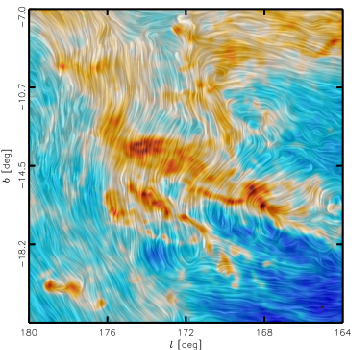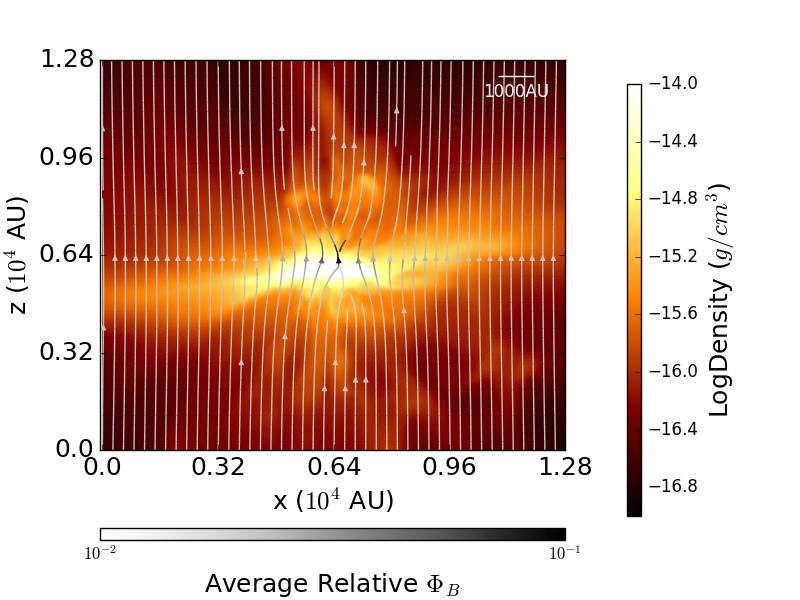The TolTEC Fields in Filaments Survey
Depth Goal: to obtain a total of ~70,000 polarization vectors
Areal Coverage: 0.4 sq. deg. depending on mapping speeds
Field Priority:
Why do a Fields In Filaments Survey?
Despite a century of investigation, our understanding of the detailed process of star formation remains hindered by observational limitations. A key question in this process is
Fortunately, the dust in these systems offers us an observational window into the magnetic field distribution in star forming regions. Needle-like dust grains are thought to preferentially align with the dominant magnetic field and then produce polarized emission at mm-wavelengths. The Planck satellite has created beautiful images of this effect in molecular clouds throughout the galaxy such as the one shown below.

But while Planck offers a critical view of the global environment of the molecular cloud, TolTEC is able to map the detailed magnetic field distribution traced by the dust on scales from the cloud's collapsing filaments down to the protostellar cores. TolTEC will produce maps of the polarized emission around filaments with 120-times better resolution than the Planck satellite and connect directly to the largest scales accessable by the ALMA telescope.

This polarization survey will map selected fields in five nearby molecular clouds down to AV = 8 mag. To achieve polarimetric detections, this survey will go 50× deeper than the Clouds-to-Cores survey, covering 2% of the sky area (2 sq. degrees) in an equivalent 100 hours of observing time. Our sensitivity estimates assume a fractional polarization of 2.0%. Using Herschel maps, we calculate that for Perseus we will obtain tens of thousands of independent polarization measurements. Other Gould Belt clouds should be similar while more massive clouds like Orion and Mon R2 will yield much larger numbers of polarization orientation vectors while still easily resolving structure inside filaments. We will reveal magnetic fields in hundreds of protostellar and starless cores for detailed statistical comparison with contemporary MHD simulations of collapsing filaments and cores.